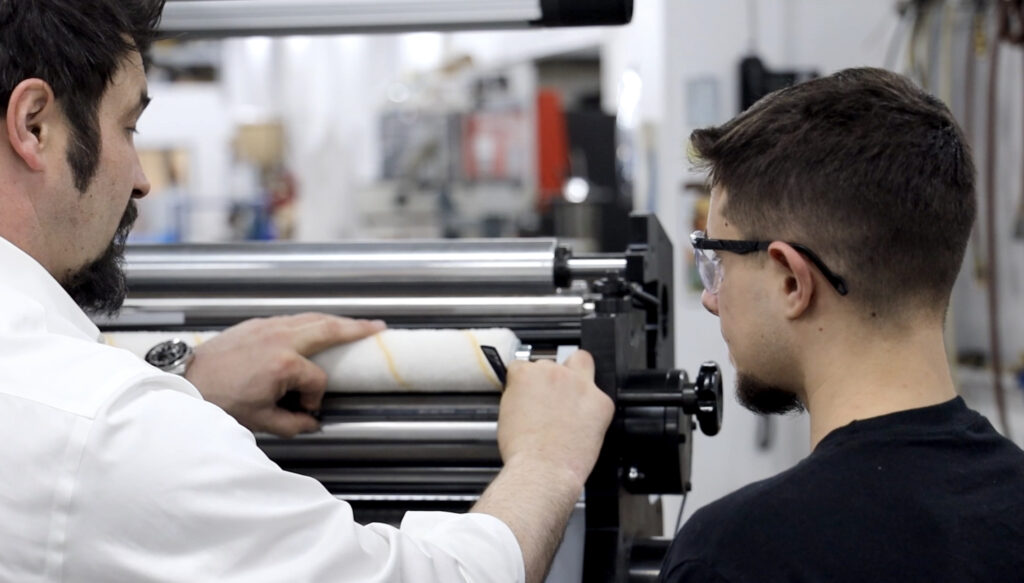UHF vs HF RFID: How to Choose the Right Frequency for Your Application
Choosing the right RFID frequency is one of the most critical decisions in designing an effective tracking system. UHF vs HF RFID isn’t just a technical distinction; it defines how your system performs in the field. From read range and environmental behavior to tag cost and compliance, your choice impacts the success of every scan.
This guide explains how passive RFID works, compares the performance of UHF and HF, and provides a practical checklist to help you select the best frequency for your specific use case.
How Passive RFID Works
Passive RFID systems operate without an internal power source. Each tag contains a microchip and antenna that harvests energy from a reader’s electromagnetic field. Once powered, the tag transmits its data back to the reader.
A complete RFID system includes:
- Tags attached to items
- Readers that power and collect tag data
- Antennas that extend the read range and coverage
- Middleware that translates raw data into insights
The operating frequency governs how these components interact. Different frequencies offer different read ranges, speeds, and resistance to interference, making UHF vs HF RFID a key design decision.
UHF vs HF RFID: Key Technical Differences
The chart below outlines how UHF and HF RFID compare across core attributes:
| Attribute | HF RFID (13.56 MHz) | UHF RFID (860–960 MHz) |
|---|---|---|
| Read Range | 10 cm up to 1 meter | 1–12 meters (3–40 ft) |
| Data Rate | Moderate | Fast |
| Tag Cost | Higher | Lower |
| Reader Cost | Lower | Higher |
| Performance Near Metal/Liquid | Stable near liquids; moderate with metal | Prone to interference |
| Environmental Sensitivity | Low | Higher (reflection, noise) |
| Security Standards | ISO 14443, ISO 15693 | EPC Gen2 / ISO 18000-63 |
| Global Compatibility | Globally standardized | Region-specific |
| Common Use Cases | Smartcards, healthcare, libraries | Logistics, supply chain, warehousing |
Bottom Line: Use HF RFID for close-range secure data transactions. Choose UHF for high-volume, long-range tracking in open environments.
Choosing the Right Frequency: A Practical Checklist
Selecting between UHF vs HF RFID isn’t about preference; it’s about performance. Use the checklist below to evaluate which is best for your application:
- Read Range Requirements: Do you need to scan across rooms or at a kiosk?
- Line-of-Sight Conditions: UHF works best with clear paths; HF is more forgiving in tight spaces.
- Environmental Exposure: HF performs better around metal shelves or liquids.
- Data Sensitivity: HF offers stronger protocols for access and payment; UHF supports EPC Gen2 v2 features for secure item-level tracking.
- Tag & Reader Costs: UHF tags are cheaper at scale. HF may be more cost-effective in small, secure systems.
- Compliance: HF tags follow global ISO standards; UHF varies by country (FCC, ETSI, etc.).
- Integration Requirements: Match frequency to your inlay format, materials, and press speed if you’re embedding RFID inline.
- Application Standards: Retail and logistics typically use UHF (EPC Gen2). Healthcare and ID systems often require HF (ISO 14443, 15693).
RFID Equipment That Supports HF and UHF
Tamarack®’s RFID insertion solutions are engineered for speed, accuracy, and adaptability, regardless of frequency.
Tamarack® Inline RFID Insertion Equipment
The Tamarack® MVW Inline RFID Insertion system enables high-speed RFID inlay insertion and verification in a single pass, directly on your new or existing Flexo press. Installed between print and finishing stations, it supports seamless integration into packaging, labeling, and tag production lines.
Designed for efficient dry inlay application, the system also offers wet inlay capability and optional features like static elimination, RFID encoding, and reader integration. Servo-driven operation and an intuitive interface allow fast setup, minimal waste, and reliable inlay placement across multi-lane configurations.
This inline solution is ideal for converters seeking to scale innovative label production with accuracy, speed, and minimal disruption to existing workflows.
Tamarack® MVW Offline RFID Inlay Insertion Equipment
The Tamarack® MVW Offline RFID Insertion system is a flexible RFID inlay insertion system designed to produce high-quality RFID labels, tags, and tickets across UHF and HF formats. It inserts inlays into pre-printed materials with precision, utilizing a re-registration system that ensures accurate alignment with printed graphics or data.
This system supports wet and dry inlays, single or multi-lane operation, and high-volume roll-to-roll or roll-to-tag workflows. Optional features include reader and encoder integration, multiple die-cut units, and a user-friendly operator interface for streamlined setup and control.
Engineered for adaptability, the MVW is ideal for converters and manufacturers producing secure credentials, serialized labels, or specialty RFID products with exacting placement requirements.
Tamarack®’s RFID inlay insertion equipment supports a wide range of tag types, helping you implement RFID where and how it makes sense.
Tamarack® Products delivers engineered RFID inlay insertion solutions for both UHF and HF frequencies. We support real-world deployment across packaging, labeling, and logistics with scalable, inline, and offline systems. Contact us to explore how we can help your UHF vs HF RFID deployment.





